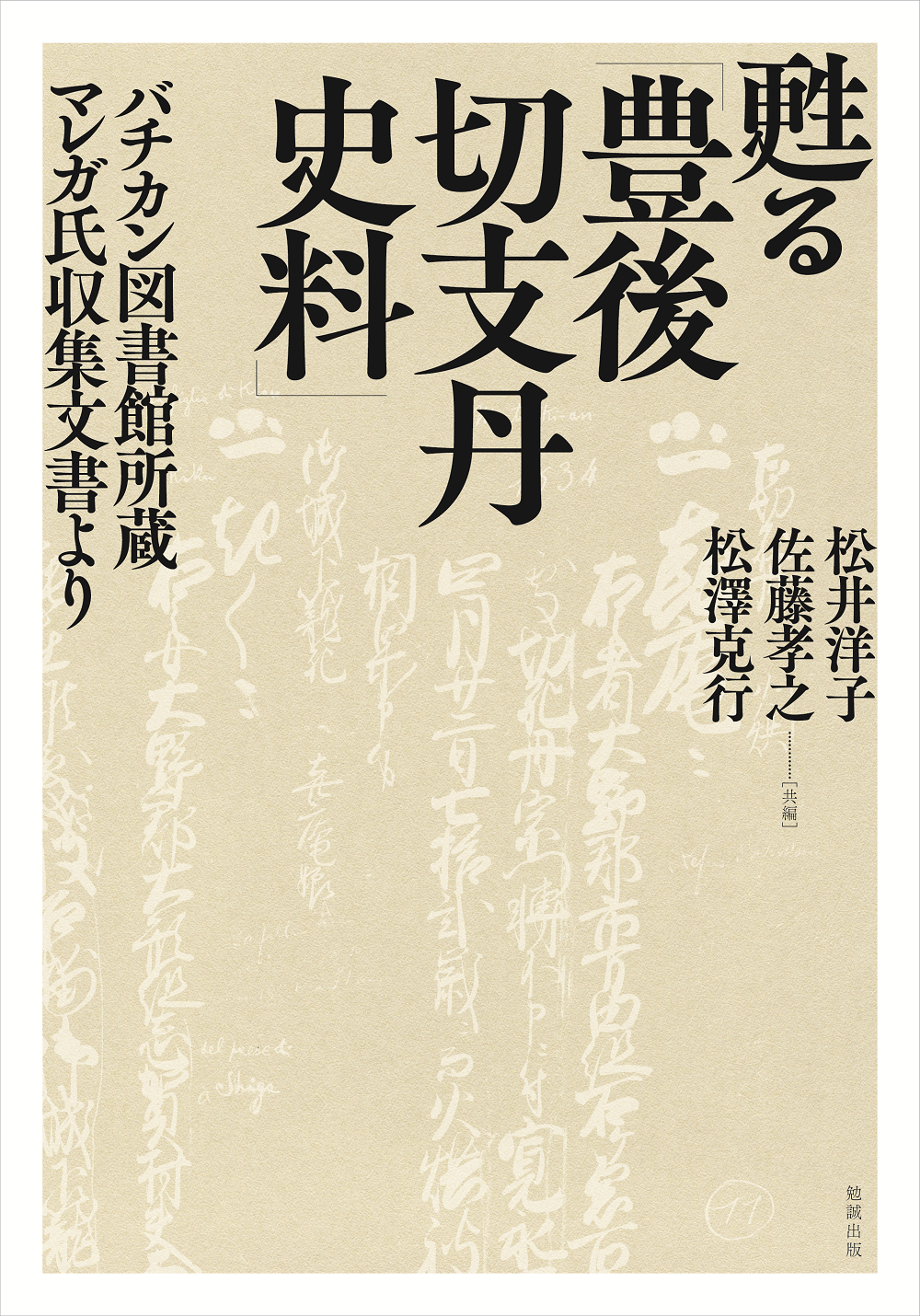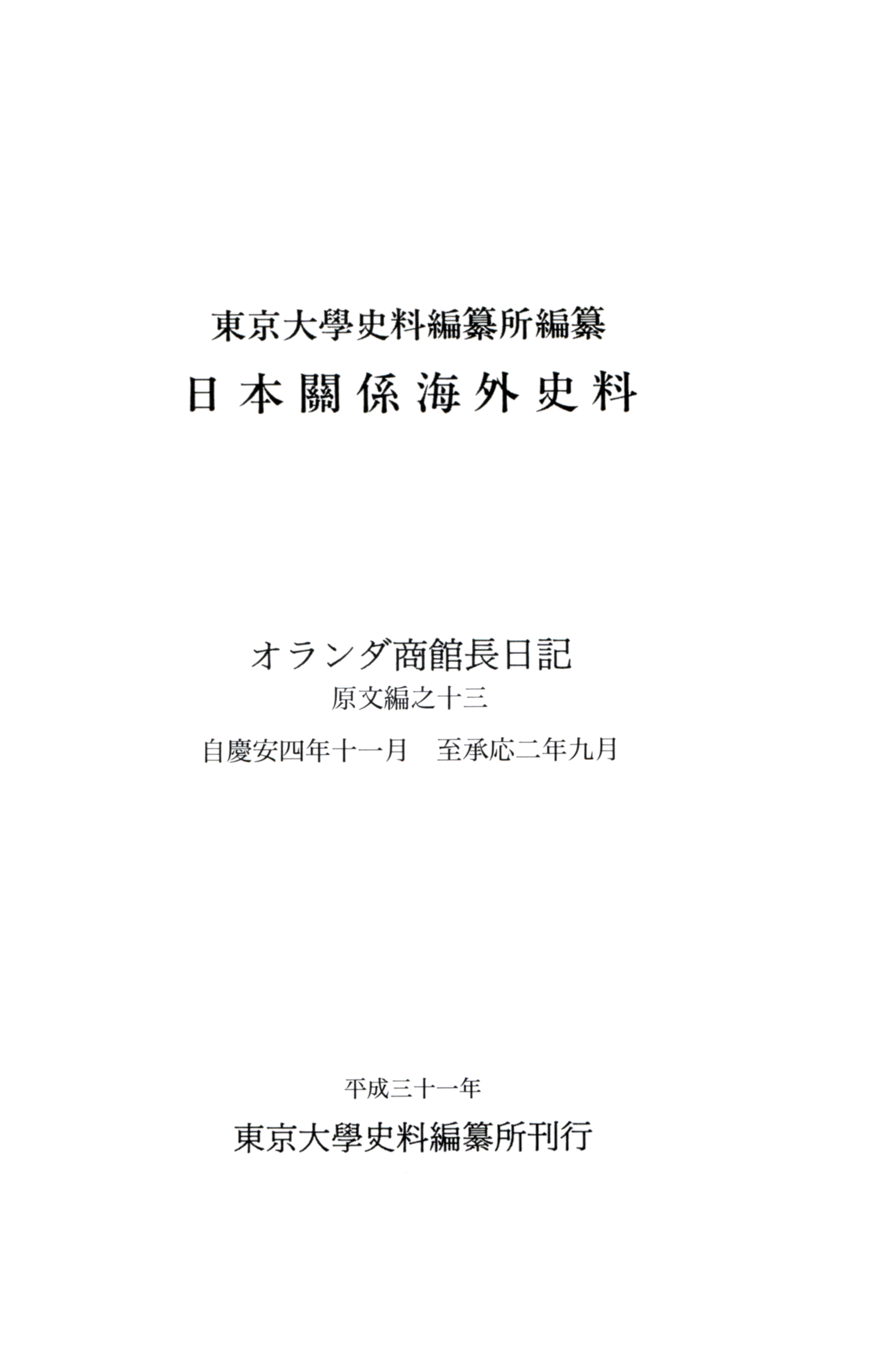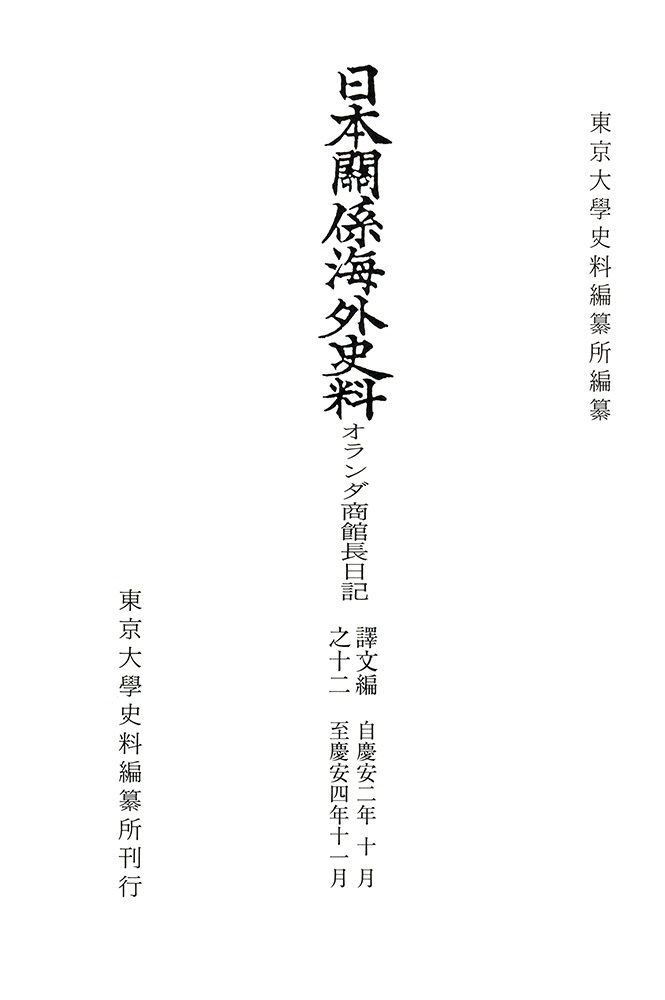
Title
Yomigaeru “Bungo Kirishitan Shiryo” (Bungo Christian Materials - Coming Back to Life: From the Documents Collected by Marega and Held by the Vatican Library)
Size
564 pages, A5 format
Language
Japanese
Released
February, 2020
ISBN
978-4-585-22261-3
Published by
Benseisha Publishing Inc.
Book Info
See Book Availability at Library
Japanese Page
In the 1930s, the Italian Catholic priest Mario Marega of the Society of Saint Francis de Sales, who had taken up a position in Ōita prefecture, learnt that large numbers of Christians had formerly lived in this region and began collecting related source materials, which he published in two collections of historical sources titled Bungo Christian Sources (Beppu: Society of Saint Francis de Sales, 1942) and Bungo Christian Sources (Contd.) (Tokyo: Don Bosco Japan, 1946). These two volumes have been indispensable for studying Christianity in Japan, but the original sources collected by Marega were sent to the Vatican, and it was not known what had become of them. But in 2011 a vast collection of documents collected by Marega, including the documents that had formed the basis of the above two publications, was rediscovered in the Vatican Library. Most of the documents had originally been held by Usuki domain’s Bureau of Religious Affairs, and in total they number more than ten thousand. National Institutes for the Humanities, the National Institute of Japanese Literature, and other Japanese research institutes cooperated with the Vatican Library to sort through, preserve, and publish these documents, and we now have a more or less complete picture of their contents.
Through a joint research project at the Historiographical Institute, University of Tokyo, which participated in the above project, the original documents of the sources included in the two collections published by Marega were examined, accurate transcriptions of them were made, and the original texts were restored, and the results have been brought together in this book.
It is well known that the Edo shogunate strictly proscribed Christianity, but after the initial harsh suppression and punishment of Christians, how were conditions in which there were no longer any Christians maintained? The sources contained in this book show the realities in Usuki domain in the former province of Bungo.
During the Sengoku period, Bungo was the base of the Christian daimyō Ōtomo Sōrin, and there were many Christians in Bungo. But in the 1630s they were decimated by punishment and forced conversion, and thereafter all the inhabitants were supposed to have become parishioners of Buddhist temples. However, in the 1660s a large-scale investigation was conducted, and it was discovered that there were still many Christians. This uncovering of Christians in Bungo was carried out under the direction of the shogunate, and those identified as Christians were arrested and sent to the office of the shogunal commissioner in Nagasaki or else imprisoned in Usuki. Marega endeavoured to exhaustively investigate who was arrested, imprisoned, and martyred during the ten years or so when this was happening. About one-third of the approximately 230 documents included in this book date from this period.
Among the people who were arrested, it was only those who renounced their beliefs that were returned to their villages. This meant that now there really were no longer any Christians in Usuki domain. This was confirmed annually by means of a religious inquisition, and under the direction of the magistrate in charge of religious affairs, officials would go around villages every year and make all the villagers tread upon a holy image(fumie) to prove that they were not Christians. Many records related to the implementation of this religious inquisition are included in this book. At the same time, those who had formerly been Christians (apostates or korobi) and their descendants(ruizoku) were recorded in special registers and placed under special surveillance. Births, deaths, marriages, and changes of residence were all reported to the authorities and were confirmed by village officials and family temples. These voluminous documents are included in the Marega Collection, and some of them have been included in this book. It also becomes evident that the descendants of apostates, of whom there were very many in this region, were not special people who were discriminated against, but were villagers who lived normally in their local communities.
A catalogue and images of the entire Marega Collection are in the process of being made public on the website of the National Institute of Japanese Literature. I believe that, as an introduction to this collection of documents, this book will be useful not only for the study of the history of Christianity in Japan but also for wide-ranging research on Japan’s politics, society, and culture during the Edo period.
(Written by MATSUI Yoko, Professor, Institute of Industrial Science / 2020)
Related Info
https://www.nijl.ac.jp/projects/marega/
Mario Marega database (the Vatican Library & National Institutes for the Humanities, National Institute of Japanese literature)
https://base1.nijl.ac.jp/~marega/



 Find a book
Find a book



